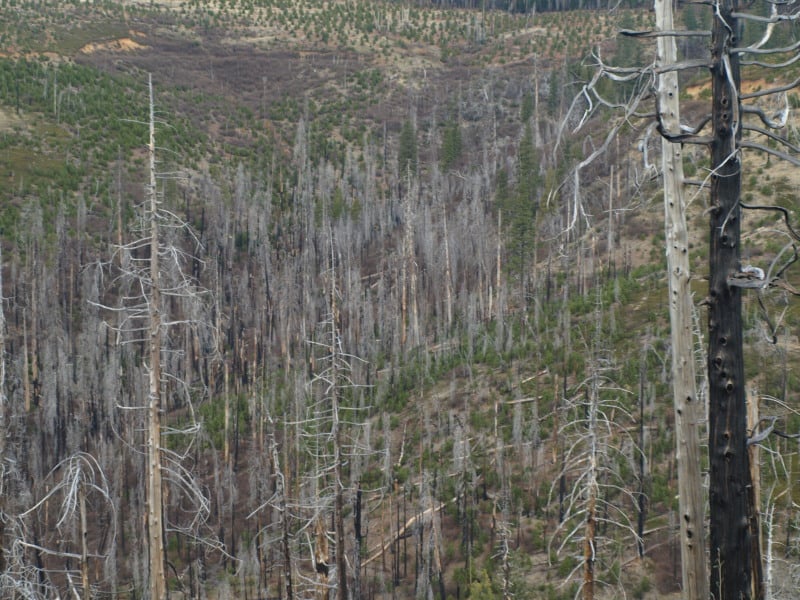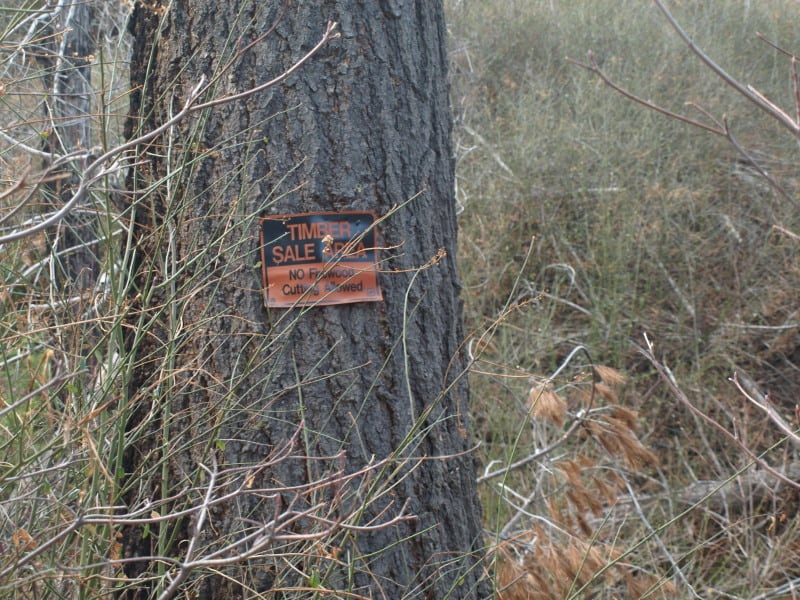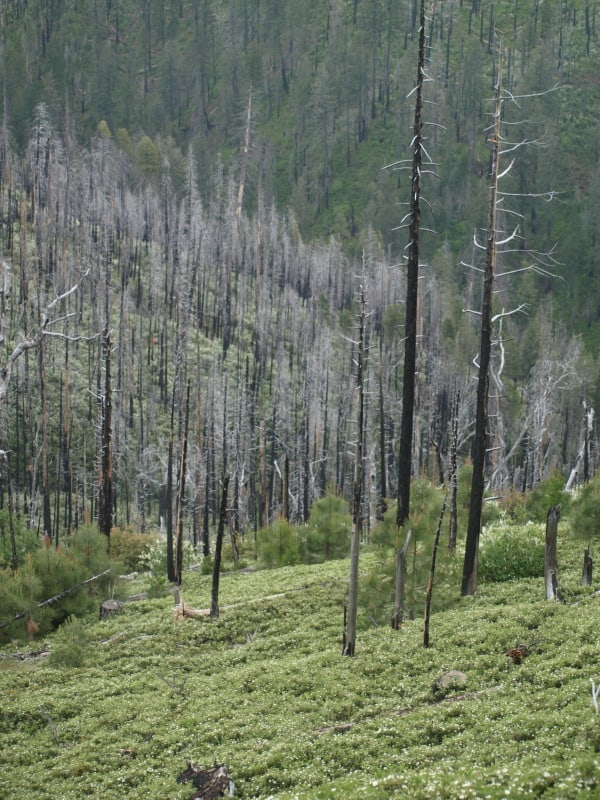The article really cuts to the heart of the issue regarding some of the politics in Montana, including what can best be described as simply anti-government sentiments.
The situation described by US Forest Service and Montana DNRC fire experts also seems to contradict one of the common refrains I hear all the time in Montana, and also on this blog when we talk about wildfire in places like Colorado’s Front Range. Basically, while some people want to give the impression that homeowners, neighborhood associations and communities have done absolutely everything possible to get FireWise and prepare for the wildfire, and all that’s left to do is increase “fuel reduction” efforts on public Forest Service lands, the experts in this article paint a much different picture. Perhaps this is just the situation and mindset in Montana, so I’m curious to see what others have experienced.
Finally, I also must highlight that the point made by Montana State Forester Harrington regarding the fact that “thinning and pre-treating forests” really doesn’t work when you have single-digit humidity, 95+ temperatures and high winds is basically the same exact point that environmentalists have been trying to make for the better part of two decades now. Reader’s may recall George Wuerthner’s piece “Wind Drives All Large Blazes,” posted on this blog as the Lolo Creek Complex fire was burning.
LOLO – How do you reconcile the fact that many private landowners in Montana are resistant to the government and local fire managers telling them what to do with their land when those same private landowners become outraged after a wildfire burns their property that wasn’t properly taken care of beforehand?
That’s the question a group of state legislators grappled with when they met with Bitterroot Valley fire managers and Montana Department of Natural Resources forestry officials on Thursday to tour the remains of the 11,000-acre Lolo Complex fire that ripped through the Highway 12 corridor west of Lolo this past August….
State Sen. Cliff Larson of Frenchtown, who represents Senate District 50, said he lives near where the Black Cat fire torched 12,000 acres in 2007.
“I know the Frenchtown Fire Department tried to work with local landowners on fuel reduction programs and protecting against fire hazards,” he recalled. “People said, ‘Just get off my property, don’t tell me what to do.’ And there are two people that I know of personally that were outraged when the fire department didn’t come there right away and because they had 15 cords of wood stacked behind their house they had to hose them down to protect their house.
“And they are outraged that they didn’t get that attention, even though the fire department went there in advance and warned them that they have some serious fire hazards right there on their property. And those two families are still complaining. So how do we force people to cooperate with the DNRC and the fire departments and the Forest Service? It’s frustrating.”
Bob Harrington, the Montana DNRC state forester, said that community wildfire prevention plans are really good in some counties but not great in others.
“We in the fire service have been at it for 15 to 20 years now, really intensely trying to impress on those homeowners that live in the wildland/urban interface to treat their property,” he explained. “We do public media, we do workshops, and there are individual consultations that the fire departments do, that our folks do. A lot of the landowners do it and take advantage of it. But we have a lot folks that that isn’t enough of an incentive yet. Whether it’s pressure from insurance, pressure from banking or peer pressure from their neighbors. Sometimes that works, sometimes that doesn’t. Unfortunately, sometimes we as Americans, there’s a lot of us that don’t respond unless it hits us in the wallet.”…
The fire managers agreed that the Lolo Complex’s main blowup was the type of fire behavior that is not easily controlled….
Harrington said a variety of factors contributed to the fire’s wild blowup.
“That’s a part of the public dialogue that we’ve been having since this fire happened,” he said. “We have folks on one side who are saying, ‘See, forest management doesn’t do anything to stop forest fires,’ because there was so much Plum Creek land that had been managed, and that also burned. The reality is, when we are talking about thinning and pre-treating forest, we’re not talking about fires like this. This was one of the most extreme fire days that you are going to see in western Montana. Single-digit humidity, close to triple-digit temperatures, and then winds 20, 30 and 40 miles per hour.
“The analogy I always give is that we still give flu shots even though we have influenza outbreaks because we are trying to minimize the effect of that, so we’re still treating forests. Reducing fire risk and prioritizing some sections in the wildland urban interface, and it gets a little bit trickier on private land and industrial forest land, which the majority of this fire happened on, areas that had been intensively managed in the past. A lot of what carried the fire was second-growth trees. Everything was burning, grass and downed logs, everything.”
Harrington said he has noticed that some landowners take advantage of educational programs and cost-sharing programs to prepare their land for fire danger, but others do not….
“So the innovators that understand where they live, they’ve taken advantage of it. But even then, like these guys saw managing this fire, we had a lot of folks in Sleeman Gulch where we had firefighters out there doing that work at the last minute.”….
Ehli said that in his experience, telling property owners what they need to do on their land to mitigate fire danger isn’t going to work.
“When we start talking about a wildfire prevention plan, I was the chief of the Hamilton Volunteer Fire Department when that came through and there was a huge pushback,” he said. “Oh my God, the resistance you got from county personnel, county commissioners and huge, huge pushback. So when you start talking about a community wildfire prevention plan, it’s not as simple as drawing lines on a map. Not only because of the enormous amount of property you have to think about, but also the political aspect as well.
“So we have got to be honest with ourselves when we start talking about prevention plans, I’m going to say it, it’s almost impossible unless we have a different mindset put in. And maybe we’re going to get there someday within the state of Montana and get people on board and get property owners on board about what we need to do, but we’ve really got to talk about the near impossibility of getting something like this in play, mostly from the political standpoint.”….
Liane said that he hopes a fire like the Lolo Complex will convince people to listen to local fire departments about taking steps to protect their property during the winter.
“Those of us who have served in natural resources committees would love to hear more about how do you convince those individuals who are knotheads to take the firewood off their back porch?” he said. “We need to build a plan that encourages people through local service activities, and the fire department in Frenchtown is very proactive. They have the same problem that Lolo does. People are sitting ducks when a fire like this comes through.”
Hansen said not a lot has changed since the big fires of 2000 rolled through the Bitterroot Valley.
“It’s the short-term memory thing that kills us,” he said. “I mean, if you had come down here last winter knocking on doors to sell people on the idea of fuel treatment, they would have told you to pound sand. Now the next three years, they’ll be begging for it. And three years from now they’ll have forgotten how bad the fire was. And we’ve seen it happen since the fires of 2000. You know, two years after the fire, they are back to not wanting anybody to tell them what to do.”
“Until the fire comes knocking at their door,” Ehli added.







